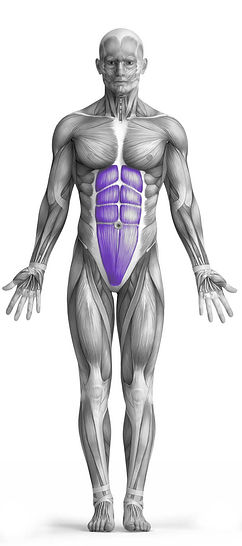Seated Barbell Twist (On Floor) 101 Video Tutorial
0

Exercise Synopsis
Target Muscle Group
Abs
Secondary Targets
Execution
Isolation
Force Type
N/A
Required Equipment
Barbell
Fitness Level
Beginner
Variations
None
Alternatives
None
Timer
Hour
Minute
Second
Stopwatch
00:00:00:00
Overview
The Seated Barbell Twist (On Floor) is an effective exercise that primarily targets the abdominal muscles, helping to strengthen and tone the core. This movement also engages the chest muscles as a secondary target. To perform the exercise, sit on the floor with your legs extended in front of you, holding a barbell with both hands in front of your chest. Keep your back straight and twist your torso to one side, then return to the center and twist to the opposite side, maintaining control throughout the motion. This rotational movement challenges the abs and chest while improving stability and mobility.
How to Perform
Begin by sitting on the floor with your legs extended straight in front of you. Make sure your glutes are securely positioned on the floor or a mat, and your back remains straight throughout the movement.
Hold a light barbell with both hands and place it across your upper chest or the back of your shoulders. Avoid resting the barbell directly on your neck to prevent strain.
Engage your core muscles and prepare to twist your torso. Slowly rotate your upper body to the right, keeping your head neutral and your eyes looking forward.
After reaching the farthest point of your right twist, reverse the motion and twist to the left side in a controlled manner, ensuring that your upper body does the majority of the movement.
Focus on keeping your core tight and activated during the entire range of motion. Your head should stay in a neutral position, not following the twist, to maintain proper spinal alignment.
Perform the exercise with deliberate control, avoiding any jerky or sudden movements. The goal is to fully engage the obliques and strengthen the muscles of the core, including the abs and chest.
Repeat for the desired number of repetitions, ensuring that each twist is done with full range of motion and proper form to maximize the effectiveness of the exercise.
★ Bonus: For exercises that involve external weights (such as dumbbells, barbells, or machines), the One Rep Max (1RM) calculator can help you estimate your maximum lifting capacity. Use it to track your strength progress and adjust your training for optimal results.
Tips
Maintain a neutral head position by keeping your eyes facing straight ahead throughout the exercise.
Engage your core muscles by tightening your abs and maintaining that tension for the entire set to ensure maximum activation.
Ensure that your back remains straight and supported, avoiding any slouching or rounding of the spine.
If you're using an Olympic bar, ensure you have enough space around you to move freely and perform the exercise safely without obstruction.
How Not to Perform
Avoid Using Momentum: Do not swing your torso or use any jerking movements to twist. This reduces the effectiveness of the exercise and can strain your back and neck. Focus on controlled, smooth movements to properly engage the target muscles.
Don’t Move Your Head: Do not turn your head along with the twist. Keeping your head neutral and facing forward helps maintain proper spinal alignment and prevents unnecessary strain on the neck.
Don’t Round Your Back: Avoid slouching or arching your back during the twist. A straight back ensures that your core muscles are doing the work, reducing the risk of lower back injuries and ensuring the exercise targets your abs properly.
Avoid Twisting Too Far: Don’t twist beyond your range of motion. Pushing too far can lead to overextension and unnecessary strain. Twist only as far as you can while maintaining control and stability.
Don’t Neglect Your Core Engagement: Failing to keep your abs tight throughout the movement will reduce the exercise’s effectiveness. Engage your core from start to finish to maximize muscle activation and prevent lower back strain.
Avoid Using Too Heavy a Barbell: Using a barbell that’s too heavy can compromise your form and cause unnecessary strain. Choose a weight that allows you to perform the exercise with proper form and control.
Don’t Rush the Movement: Perform the exercise slowly and deliberately. Rushing through the movement wastes energy and doesn’t allow you to fully engage the target muscles, reducing the overall effectiveness.
Don’t Let Your Glutes Lift Off the Floor: Make sure your glutes remain in contact with the floor or mat throughout the movement. Lifting your glutes can cause instability and take focus away from your core muscles.
Variations
Variations of fitness exercises refer to different ways of performing a specific exercise or movement to target various muscle groups, intensities, or goals. These variations aim to challenge the body differently, prevent plateaus, and cater to individuals with varying fitness levels.
Alternatives
Alternative exercises in fitness refer to different movements or activities that target similar muscle groups or serve the same training purpose as the primary exercise. These alternative exercises can be used as substitutes when the original exercise is unavailable or challenging to perform due to various reasons such as equipment limitations, injuries, or personal preferences.








